Satanism
Home
When one says Satanism, most people think of sex rituals, murder, black masses, the pentagram, black clothing, metal music, etc. But few people know that many of these things came later, through the influence of people who have reshaped the original Satanic teachings to their own liking, in order to exploit individuals susceptible to manipulation so that they could become leaders and use their influence over them to their advantage.
In my work I will attempt to expose the mystifications and myths in order to look objectively at the whole issue and the development of Satanism over time. When did it originate? How did it develop and divide? And how can its members be defined? This is what this thesis will deal with.
The beginnings of Satanism
So what is Satanism? When and where did it appear and what is its real goal?
Satanism has no precise definition. The name comes from the cult of Satan worship, a biblical figure created by God, but Satan was rebellious and wanted to rule as a second God, so he was cast out of heaven and became a fallen angel, an opponent of God and a symbol of evil.
The origins of Satanism are difficult to chart, sometimes beginning in the 10th century, sometimes in the 18th century. Whether it originated in the 10th or the 18th century, Satanism was still misrepresented as a violent religion, largely due to the Christian Church's investigation of the black masses, where children were allegedly sexually abused and murdered. But rather than reality, this is a fabrication of the church to reassure its sheep of the importance of faith in God and Jesus Christ and to maintain its power over the people. In fact, it seems that the original Satanism is based on pagan religion, which is the most likely based on the rituals and symbols used.
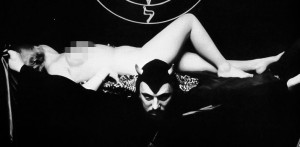
As to the nature of Satanism, the authors differ. I personally agree with Prof. Milan Nakonečný and Mr. Vesely. If their opinions are combined, a definition is created which I think is closest to reality. Namely, that it is a practical philosophy for all those who are ready to live, who want to grasp the hopes and joys that life offers them, who have recognized and transformed their freedom, who rely on their own intelligence rather than on an imposed belief system, and that Satan is a symbol of rebellion against convention and a symbol of uninhibited life, a symbol of full sensuality, especially sexual.
As far as Satanic doctrine is concerned, I agree with Mr. Vojtíšek who states that it is a combination of various elements of magic, occultism, spiritualism and witchcraft. Which actually explains why Satanism is so closely linked to sexuality. Not only do Satanists wear the pentagram, which is a pagan symbol of fertility, the miracle of the birth of life, a sacred thing but tabooed by the Church, and then they use a lot of rituals that have nothing to do with human sacrifice, but they are not forbidden, they are only used exceptionally. This also applies to sexual rituals, which are also practiced rarely. Later on, the pentagram began to be used inverted so that one point of the star is down and two are up, which is a symbol of black magic and is used during rituals.
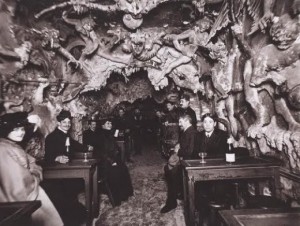
Magic, occultism, spiritualism and witchcraft
For a better understanding of Satanic doctrine, I would like to explain the above terms.
Occultism is a science, a philosophy that investigates or deals with the human soul with the help of sensory perceptions. In practice, this means that in order to know the soul, it is necessary to use not only the external senses, but also the internal ones such as intuition, imagination, etc. It also takes into account the material human body. It is a very complex doctrine and the result of its study is the gift of divination, telepathy, clairvoyance, etc.
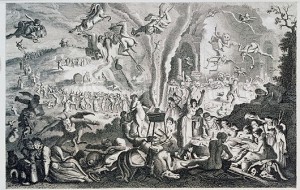
Spiritism originated in the 19th century and its essence is the assumption of the existence of spirits and consists in learning to communicate with them through various methods.
Magic is one of the oldest teachings of mankind. The essence is the pursuit of one's desires, wishes and needs through the use of supernatural forces.
Witchcraft is referred to as the working of evil through magic. The term became widespread mainly in the Middle Ages because of the famous Witch Trials.
Evolution of Satanism
The depiction of Satan as we know him today, as a creature with a tail, horns and hooves, comes, like the concept of hell, from the Middle Ages. At that time, the Church created stories of witches as his worshippers. Witches were supposed to meet on Sabbaths, where black masses were held, through which they gained their power.
Many writers believe that there was indeed a movement in the Middle Ages that practiced opposition to Christianity, worshipping the devil, and that met on so-called Sabbaths; others dismiss it as an invention of the Inquisition.
In the thirteenth century, Luciferianism, which worships Lucifer, a fallen angel, was on the rise. His adherents believe that he was unjustly cast down to Earth, and that he alone is the good and just one, as opposed to the Christian God, who is evil. With Satanism, they share the same hatred of Christianity, but the difference is in the understanding of Satan, for Satanists mostly take him to be vengeful and cruel.
Luciferians were persecuted by the church in their day.

In the seventeenth century, one of the most notorious cases of Satanism took place in France and ended up in court. King Louis XIV's mistress, Madame de Montespan (see image above), was allegedly eager to retain the king's affections. According to some claims, she was therefore to attend a black mass where a child was killed for these purposes. All was eventually revealed and the actors were executed, except Madame de Montespan, who was sent to a convent and died there. During the eighteenth century there was a sharp decline in trials, as the emerging Enlightenment regarded witchcraft as a fable and a relic. In this more relaxed atmosphere, the so-called 'Hellfire Clubs' were formed in England and Ireland. The first was founded in London in 1719 by Earl Philip Wharton, but the club was short-lived and had to be dissolved after two years. The main aim was to ridicule Christianity through parodied ceremonies. In 1749, Francis Dashwood, who was a member of the original club, founded the Order of Medmenham Franciscans, which was later also called the Hellfire Club. More than an invocation of Satan, it was more about orgies and disorderly drinking, and Satanism only added an element of mystery. Members of the club were mainly high-ranking politicians and artists. The founder of Dashwood himself was politically active.
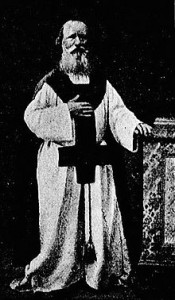
In the 1840s, Eugene Vintras founded a sect in France that practiced the so-called "white masses", which were supposedly a defense against evil. In 1839, Vintras had a vision in which he was told by the archangel Michael that he was the reincarnation of the prophet Elijah and that he was to create a new religious order that would proclaim the coming of the Holy Spirit. He traveled throughout France and gained many followers, including some Catholic priests. Mysterious phenomena occurred during the ceremonies, such as the bleeding of hosts, and inverted crosses were reportedly part of the masses, leading to the sect's condemnation by the Pope. Vintras' successor, the excommunicated priest Joseph Boullan, went even further, preaching that only through sexual intercourse with angels and spirits could redemption be achieved.
Aleister Crowley
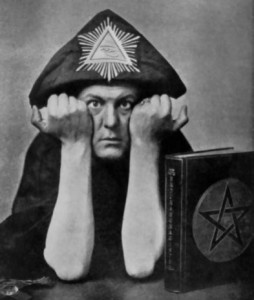
In 1885, the Ordo Templi Orientis (Order of the Eastern Templars) was founded in Germany, practicing magic and occultism. One of its Grand Masters was Aleister Crowley, the most famous British occultist of the twentieth century. After a mystical experience in 1896, he became interested in the secret sciences, magic and alchemy. He joined the Order of the Golden Dawn, and rose rapidly up its hierarchy. In 1904, while in Egypt, a supernatural being named Aiwass dictated the Book of the Law to him. This book speaks of the end of one epoch and the imminent arrival of a new one, the so-called Aeon of Horus, with which are associated special moral laws, which are summarized in the system of Thelema. The basis is will and desire, which have been elevated to the highest moral authority. In 1907 he founded the Order of the Silver Star, which adopted the Book of the Law as its gospel. In 1912 he became head of the English branch of the Ordo Templi Orentis, and in 1920 he moved to Sicily, where he founded the Abbey of Thelema group. Here he indulged in sexual activities with his followers to release the energy needed for magical acts. The use of various drugs was no exception. Elements of the occult, the Kabbalah, Egyptian magic and yoga appear in his teachings. Although he did not consider himself a Satanist, and the Black Mass was something barbaric to him, he called himself the "Great Beast of 666" and influenced the entire Satanic movement of the twentieth century. Gradually, other groups were formed, but the Church of Satan, formed in San Francisco, which represents the most widespread Satanic movement in the world, the so-called modern Satanism, achieved the greatest popularity. This was created by Anton Szandor LaVey in the 1960s, and his Church became the first truly organized form of Satanism.
Anton Szandor LaVey
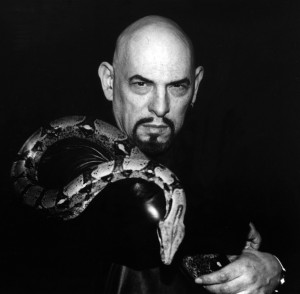
Anton Szandor LaVey was born in 1930 in Chicago. From a young age he was interested in the occult, and at the age of eighteen he became a hypnotist and an organist at an amusement park. There his disgust with Christianity erupted when he saw the hypocrisy of men who one day ogled half-naked dancers and the next day prayed for forgiveness. After working as a police photographer and nightclub musician, he began giving lectures on magic, the occult and the supernatural in his San Francisco home. San Francisco was the center of the counterculture at the time. Beatniks, and later hippies, felt resentment towards mainstream society and its moral codes, and began to seek out other schools of thought. Hence LaVey's Satanism, preaching against all forms of renunciation, was also of great interest to the audience. In the early 1960s, he and his followers founded a group called the Magic Circle, which evolved into the Church of Satan in 1966. On the Night of Valpura, LaVey had his head shaved and declared himself a high priest. He used the term church to refer to devil worship, as a provocation to Christians. Satanic baptisms and weddings are also associated with this. But the real sensation came in 1969 when The Satanic Bible was published. This is a seminal work of modern Satanism in which LaVey declares war on all religions, especially Christianity. He believes that Christianity, by giving sinful status to natural instincts, keeps humanity in a constant state of guilt. This ensures the Church's influence and power. In the introduction of the book, he lays out the nine points of the Satanic Nine, which are a complete inversion of Christian morality. He encourages doubt as the driving force without which we will never be able to fully free ourselves from ingrained dogmas. The treatise is divided into four parts, called the Book of Satan, the Book of Lucifer, the Book of Belial, and the Book of Leviathan. Each is further assigned one of the elements, in the order of fire, air, earth, water. The first two books deal with Satanic philosophy and the next two with ritual and magic. LaVey views rituals as a necessary part of an individual's life, allowing him to give full vent to his emotions through psychodrama. The last section contains magical incantations in the Enochian language. This is said to be the oldest language, rediscovered in the sixteenth century by John Dee and Edward Kelly, through communication with angels. LaVey does not believe in any god or Satan, as they are merely figments of human imagination. Rather, he sees Satan as a driving force in nature, an unknown entity that controls everything. Humans are just animals with instincts, the fulfillment of which is completely natural and should not be demonized. Since, according to the Satanic Bible, there is no afterlife and death is the end of everything, we should live fully and indulge our desires, not be ashamed of them. We should consider ourselves first and foremost and try to assert ourselves at any cost, for in the world, love and truth do not win, but power and strength. We must take responsibility for our actions, not fold our hands in our laps and rely on the help of a non-existent God. Those who can see through the lies and fight for their place in the world are the elite who will rule the earth. The rest are weak, pathetic, and will only be given slavery.

LaVey's next book, The Perfect Witch, was published in 1970. Here are instructions for women on how to seduce men that work on the principle of attracting opposites. Two years later, Satanic Rituals was published, and along with the two previous books, became a Satanic classic. Meanwhile, the church had grown considerably. Branches (called "slums") were already operating in major cities in the United States, such as Detroit, Los Angeles, Chicago, New York, and LasVegas. In the mid-1970s, the number of newcomers was reduced, and after disagreements with LaVey's approach, some members formed a new organization, the Temple of Seth. This was founded by husband and wife Michael Aquino and Lilith Sinclair in 1975.
The fundamental writing of the Temple of Seth is the Book of the Night Coming, which speaks of the coming of a new Age of Seth, which will follow the "Age of Satan" and in which Aquino will play a central role. The fundamental difference between Aquino's and LaVey's view of Satanism is that Aquino understood Satan as a real being, in the form of the Egyptian god of confusion and destruction, Seth. Temple members believe that intelligence was brought to us by Seth, and that we need to rid ourselves of sleep in order to become godlike. However, in the 1980s there was a resurgence of interest in LaVey Satanism. In 1991, Jiri Valter founded the Czechoslovakian branch of the Church of Satan, and was its High Priest until 2005. After his departure, the Church reorganized and adopted the name First Czechoslovak Church of Satan.
LaVey died in 1997, but his organization still functions today. Peter Gilmore became the new High Priest of the Church of Satan. All of LaVey's descendants are active Satanists, and his daughter Karla founded the Church of Satan in 1999 to serve primarily for the study of Satanic and occult writings. There are also bands that combine Satanism with Nazi ideology, and much of this phenomenon is part of National Socialist Black Metal (NSBM for short - bands such as Infernum, Satanic Warmaster and Hate Forest). The Order of the Black Ram or the Order of the Nine Angels have been associated with fascism, although their representatives have refuted this. In addition to more or less official groups, there are also small cults that practice ritual murder and other illegal activities.
Division of Satanism
Each author divides the branches of Satanism differently. I chose the division according to Introvigne:
- Rationalistic Satanism - represents the ideas of LaVey, represents an atheistic religion where Christian morality is rejected.
- Occultist Satanism - inherits the ideas of Michael Aquinas and the Temple of Seth, believes in Satan, who is described in the Bible, recognizes him as a real being, typical is the Black Mass, which is a complete dishonor of the Christian Mass, manifests itself in mockery of Christianity, hatred of the Christian God and love for Satan
- Acid Satanism - has no organized structure, an underground current in which young people under the age of twenty-five gather, typically consuming drugs, reading satanic texts, listening to satanic music and engaging in satanic rituals - desecration of churches and cemeteries, ritual torture and murder
- Luciferianism - believes that Satan has been wrongly condemned by God, Satan is considered a good being, on the contrary God is the one responsible for the imperfection of the world. Satan is the leader of the rebellion against God
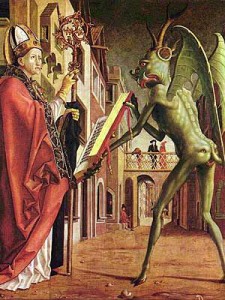
Conclusion
As it is clear from my work, ritual murders occur only sporadically and they are not Satanists as such, but only an offshoot of Satanism. But unfortunately, people mainly associate Satanism with the bad side, which does not even correspond to the true teachings. Hopefully people will one day start searching for the truth before condemning someone for their beliefs that they have almost no information about.
Sources
KOZLÍK, Jan. Aleister Crowley a satanismus. [online]. Pardubice, 2009 [cit. 2015-12-15]. Dostupné z: https://dk.upce.cz/bitstream/handle/10195/33309/KozlikJ_Aleister%20Crowley_MM_2009.pdf?sequence=1&isAllowed=y. Bakalářská práce. Univerzita Pardubice, fakulta filozofická. Vedoucí práce neuveden.
KUBIŠTOVÁ-ŠKOCHOVÁ, Věra. Zrcadlo okultismu aneb využití tajných věd. Brno: CENTA, 2004. vyd. 8. ISBN 80-86785-01-7
SMEJKAL, Jan. Satanismus v metalu. [online]. Praha, 2013 [cit. 2015-12-15]. Dostupné z: http://is.jabok.cz/th/6139/jabok_b/Jan_Smejkal_-_bakalarska_prace.pdf. Bakalářská práce. Karlova Univerzita v Praze, Evangelická teologická fakulta. Vedoucí práce Ing. Mgr. Jan Dočkal, CSc.
author: Kateřina Běhanová
correction: Ondřej Bezouška


